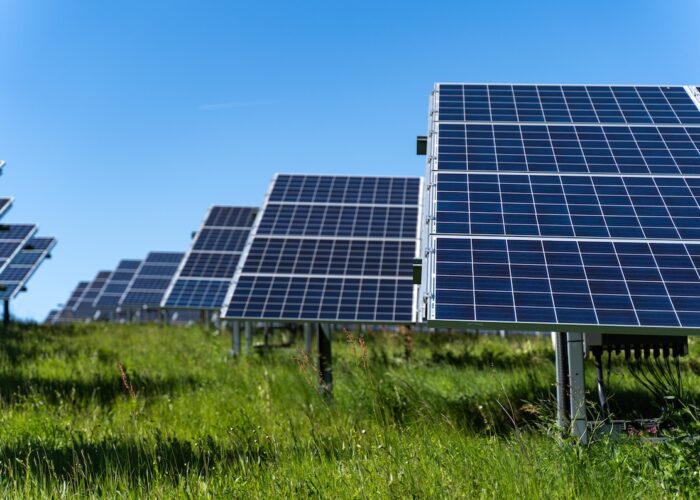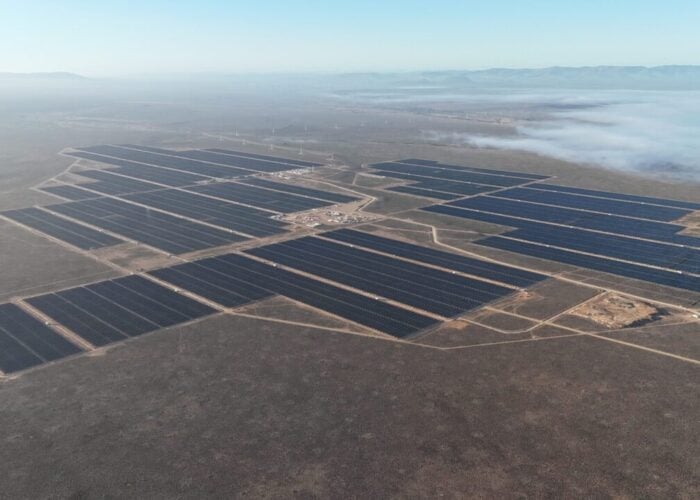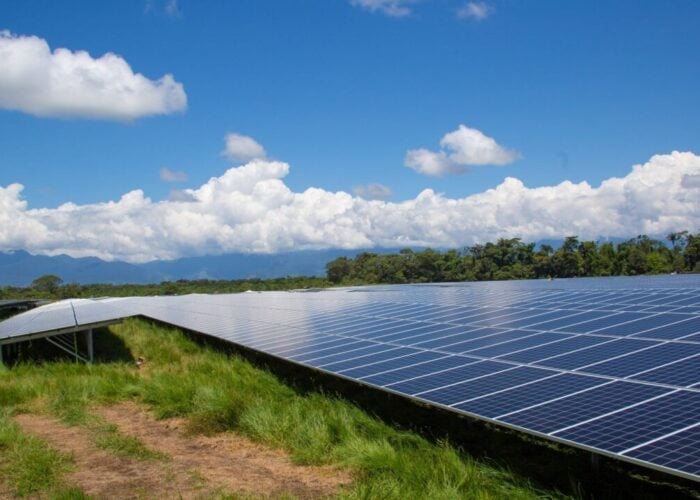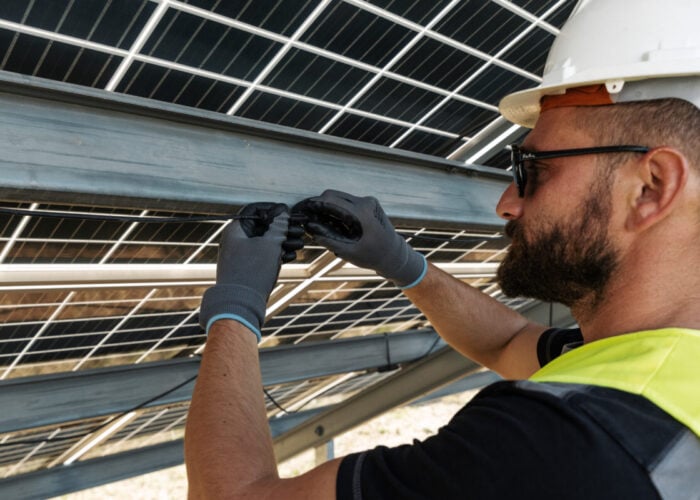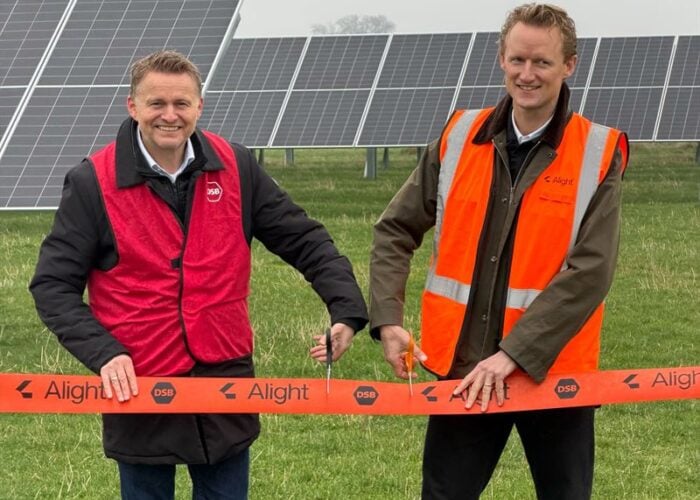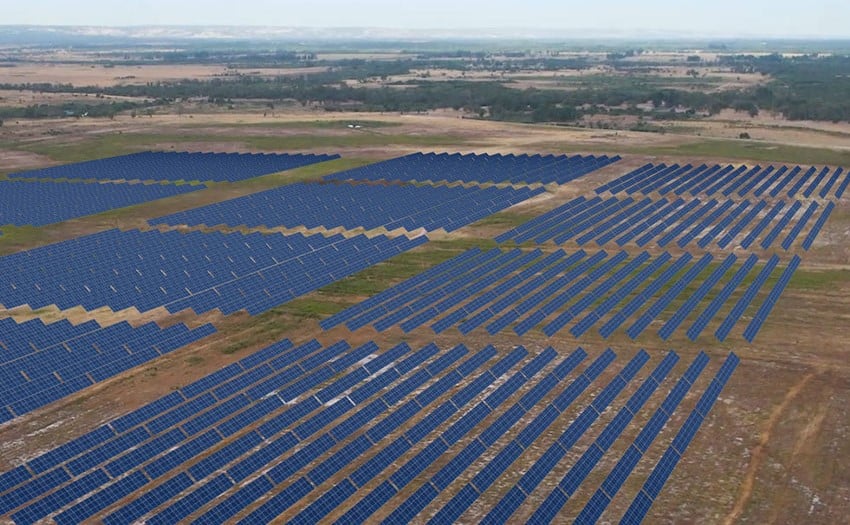
Renewable energy developer Frontier Energy has announced plans to expand its Waroona Renewable Energy Project into a multi-stage renewable energy precinct by 2031, targeting up to 1GW of solar generation and 660MW of battery energy storage.
The ASX-listed company claims it will develop the Waroona Energy Park as the “largest renewable energy precinct in south-west Western Australia.” The expansion strategy is designed to avoid dependence on major new transmission infrastructure for faster and lower-cost delivery to the market.
Try Premium for just $1
- Full premium access for the first month at only $1
- Converts to an annual rate after 30 days unless cancelled
- Cancel anytime during the trial period
Premium Benefits
- Expert industry analysis and interviews
- Digital access to PV Tech Power journal
- Exclusive event discounts
Or get the full Premium subscription right away
Or continue reading this article for free
The multi-stage development timeline aligns with the retirement of 1.3-1.7GW of ageing coal and gas generation assets across Western Australia before 2031.
Stage one of the Frontier project comprises 120MW of solar PV capacity paired with an 81.5MW battery energy storage system (BESS), with commercial operations targeted for October 2027.
The project secured AU$215 million (US$141.1 million) in debt financing to support development, though construction was temporarily halted last year after it failed to secure Reserve Capacity Credits (RCCs) from AEMO.
A multi-staged development of the renewable energy precinct
Stage two will match the scale of the initial development with approximately 120MW of solar generation and 80MW of battery storage. The second phase already has development approval, with Frontier targeting revenue certainty during 2026 to underpin project financing through power purchase agreement (PPA) discussions.
It is also seeking support via the Australian government’s Capacity Investment Scheme (CIS) Tender 5, which will close before the end of the year. The Tender seeks 1.6GW of renewable energy generation in the Wholesale Electricity Market (WEM).
Stage three of the Waroona project proposes 200MW of solar generation with 140MW of battery storage, while the fourth stage targets 560MW of solar capacity paired with 300-360MW of battery storage.
The later stages will require additional land acquisition, with Frontier noting that discussions have commenced for the necessary parcels.
Frontier CEO Adam Kiley highlighted Western Australia’s energy transition context, noting the planned retirement of at least 1.3GW of ageing coal and gas generation assets before 2031.
“Frontier’s Waroona Energy Park has the potential to play a major role in replacing this energy through our integrated solar/battery expansion strategy,” Kiley said.
Frontier Energy was formed through the acquisition of Waroona and other assets, creating an Australian company with a 335MW solar portfolio. The company has positioned itself to execute the planned expansion with key approvals, land holdings, and an experienced development team already in place.
The company plans to complete definitive feasibility studies and finalise environmental approvals for stage two in 2026, while commencing environmental, heritage and development applications for stages three and four.
Strategic grid connection advantage
Frontier’s existing grid connection and 830-hectare freehold land position provide the foundation for the near-term expansion strategy at the Waroona project.
The Waroona Energy Park is located just 0.5km from the Western Power Landwehr Terminal, and stage one of construction will include the building of a connection to a 33kV/330kV substation on site, via a 330kV single circuit transmission line.
The 2025 Electricity Statement of Opportunities, released by AEMO earlier this year, highlighted the Landwehr and Kwinana Terminals as strong parts of the grid until at least 2031. This system strength supports the project’s expansion plans without requiring major grid infrastructure investment.
Other components of Western Australian government’s broader transmission strategy, outlined in the Southwest Interconnected System Transmission (SWIS) Plan, focus on opening up more grid connection capacity.
The plan emphasises enabling “the retirement of all state-owned coal generation assets by 2030” through new transmission infrastructure, including the AU$1.2 billion Clean Energy Link North project, which is expected to be completed by 2027 and unlock 1GW of additional transmission capacity for wind generation projects.


